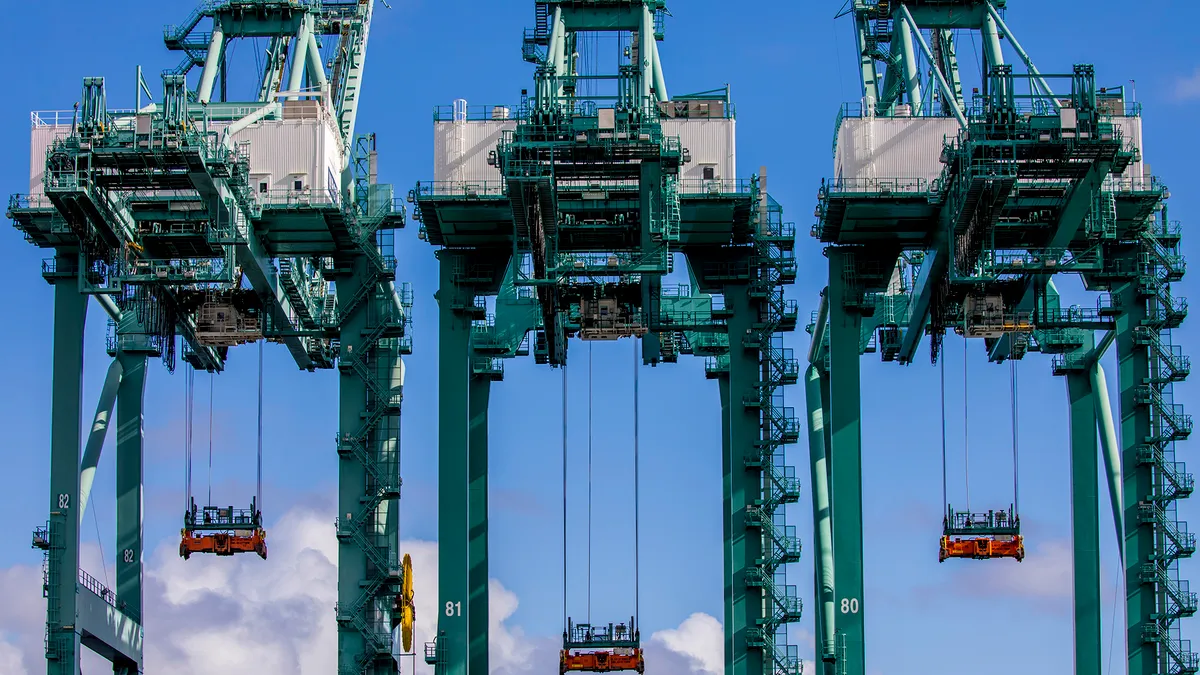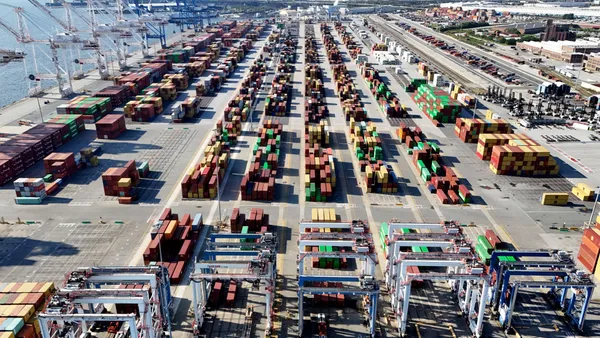LOS ANGELES — Supply chain managers have actively advanced cargo shipments during the year to reduce risk, according to Paul Bingham, director of transportation consulting at S&P Global Market Intelligence.
Factors such as the ongoing risk to transit cargo through the Red Sea, looming East and Gulf Coast port labor negotiations and low water levels at the Panama Canal from earlier this year are contributing to the shift, Bingham said during a Port of Los Angeles media briefing on Aug. 13.
The shift has contributed to a “tremendous surge into the West Coast as the U.S. consumer has stayed strong in terms of their consumption to bring in imports to meet demand nationally,” he added.
Both the Port of Los Angeles and the Port of Long Beach reported record cargo growth.
“We’ve seen an influx of year-end holiday goods coming across our docks a bit earlier than usual to avoid any risk of delay later in the year,” Port of Los Angeles Executive Director Gene Seroka said at the briefing.
The port processed 939,600 total TEUs in July with goods such as toys, electronics, and clothing “arriving at the same time as typical back-to-school, fall fashion and Halloween merchandise,” Seroka said. Cargo volumes were up 37% year over year and the port’s “best” July in its 116-year history.
Meanwhile, Port of Long Beach processed 882,376 total TEUs in July, up 53% YoY, as retailers stocked up on goods ahead of the peak shipping season, the port said in a press release.
“We’re in a strong position heading into the peak shipping season as consumers purchase back-to-school supplies and shippers move goods ahead of potential tariff increases,” Port of Long Beach CEO Mario Cordero said in the release.
Contingency plans such as cargo diversions have been a focus for shippers and logistics providers for quite some time as labor tensions rise across East and Gulf Coast ports.
“All of them have to take into consideration what's happening across the supply chains with their partners, even if they're not directly affected in their actual shipments,” Bingham said.
There are a few weeks left until the International Longshoremen’s Association’s labor contract expires on Sept. 30. If a deal is not reached, the ILA has vocalized their intent to strike is more likely.
If a strike were to happen, the impact depends on the duration of the strike, Bingham said. A strike of a few days will have minimal impact to the overall economy, Bingham said, especially with the mitigation steps already taken by supply chain managers.
“However, if there is a strike in place and lasts for a longer period of time, there is some trade that can't be fully mitigated, for example fresh produce,” Bingham said. The economist says this is “very unlikely” and expects the election and political pressures will be extreme on both sides to negotiate an agreement.














